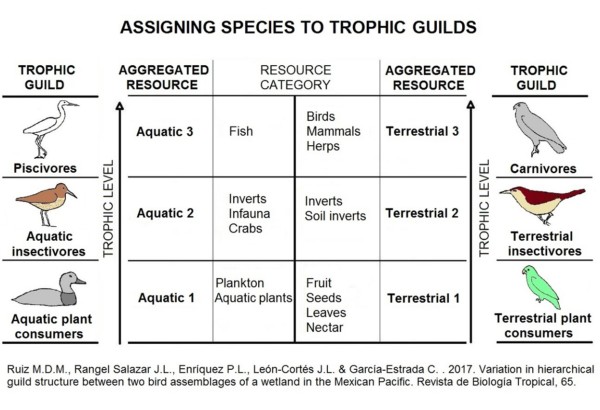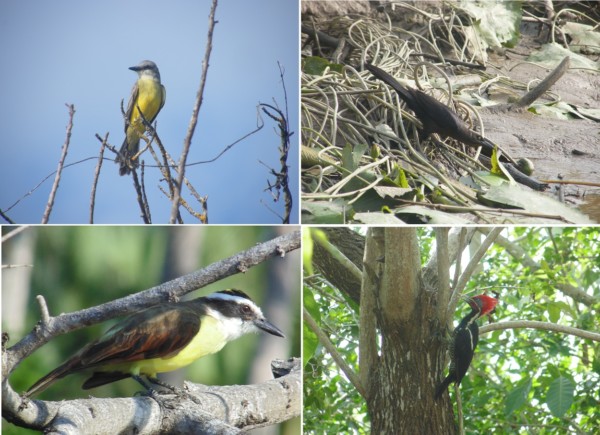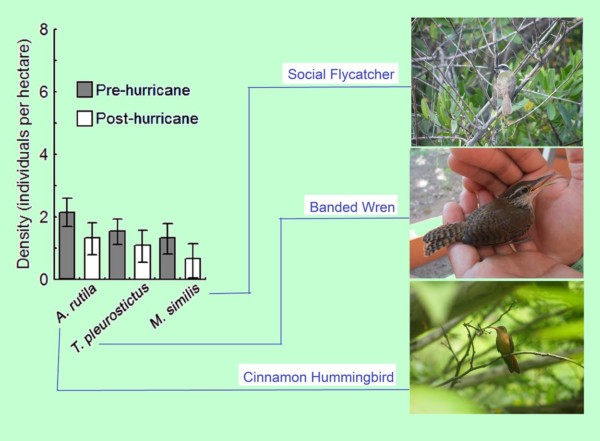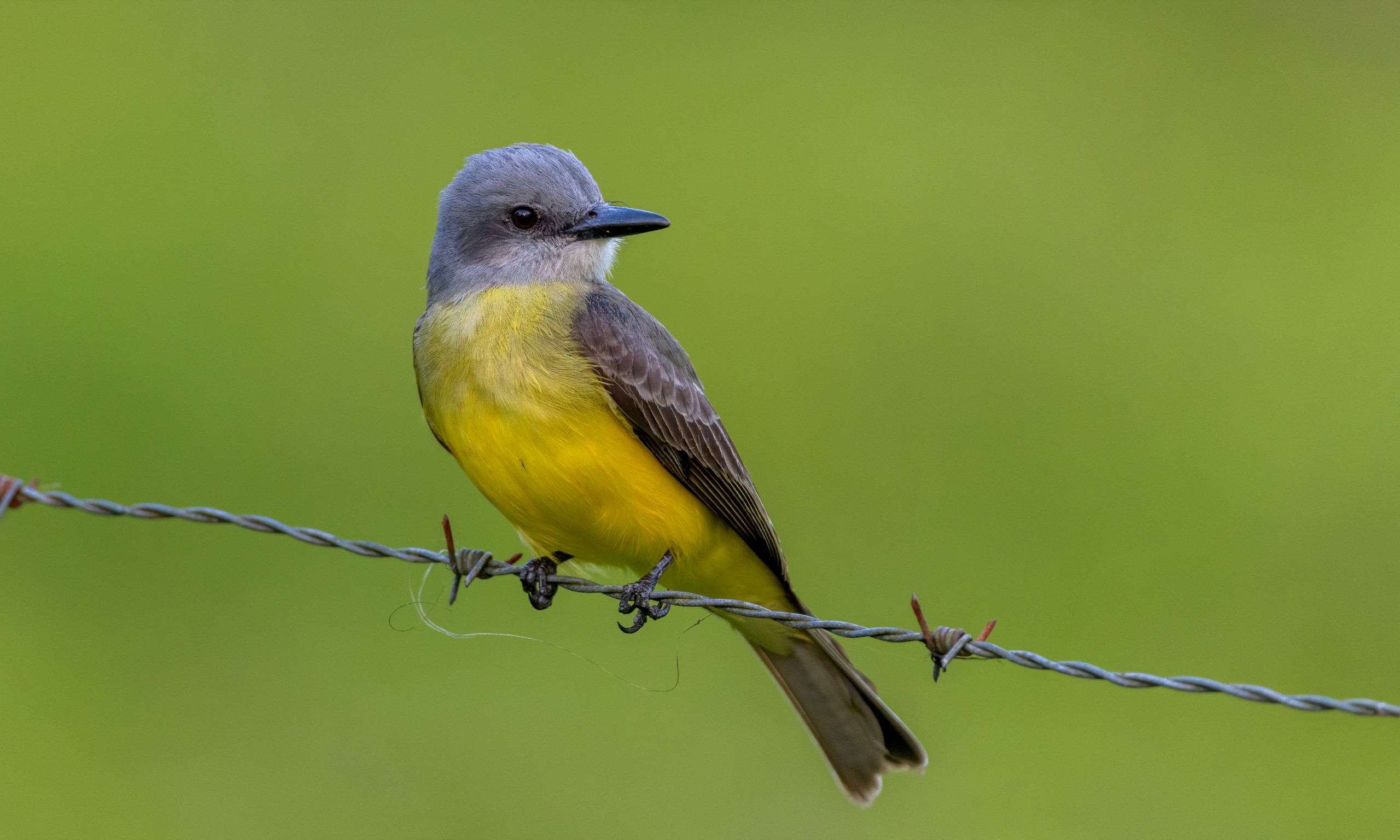 LINKED PAPER
LINKED PAPER
Guild-level response to Hurricane Carlotta among birds in a Mexican wetland. Ruiz, M.D.M. & J.L. Rangel Salazar. 2021 Ibis. doi: 10.1111/ibi.13028 VIEW
A hurricane is a momentous occasion for all concerned, not least for birds and trees in coastal ecosystems. With climate change driving increases in hurricane frequency and intensity, we should be asking ourselves: Which birds are likely to be most affected, and where? Furthermore, there is a pragmatic advantage to asking which types of birds are likely to be affected by a given disturbance, because this creates potential for identifying vulnerable groups of species (Sutherland 2007). For example, are aquatic species more susceptible than terrestrial? Are birds of mudflats more vulnerable than those of mangrove forests?
Mexico’s extensive coastline is exposed to hurricanes from the east and west. In this region, climate change is predicted to impact mangroves through increased storminess, rising sea-level and changes in precipitation (Ward et al. 2016). Compared to the Caribbean and Gulf of Mexico, hurricanes have historically been relatively infrequent on the Pacific coast. However, while living beside a coastal lagoon on the Pacific coast I saw how Hurricane Carlotta not only brought chaos to the daily lives of local people, but also transformed the mangroves and other tropical forests (Figure 1).
Carlotta’s centre hit the coast just 15 km from my home in Ventanilla, a small, rural community where many of the houses are literally a stone’s throw from the lagoon. My work included training ecotourism guides from community-led cooperatives along the coast of Oaxaca in how to provide specialised bird-watching tours, and you can support them and their valuable conservation work here.

Figure 1 Four years after Hurricane Carlotta and Eulalio Cortés Reyes paddles a panga through the mangrove © Mateo Ruiz.
For two years I had been repeating exactly the same fixed-radius 10–minute point count methods to sample bird abundance monthly at 20 sites in mangroves and in un-wooded marshland. In June 2012, Carlotta brought with her an incredible opportunity to explore how the birds responded to a catastrophic disturbance. The 170+ km/h winds reduced Red Mangrove density by 80% and White Mangroves by 20% (Ruiz Bruce Taylor et al. 2013), and instead of reaching the count sites by gliding through the water in a paddle boat, I now had to balance along fallen trees and wade through mud and water. The vegetation was less affected at the marsh, although storm surge changed the configuration of delta formations.
After collecting a third year of data to represent the post-hurricane period, there were observations of 149 species, ranging from Cinnamon Hummingbird (Amazilia rutila) to Great Egret (Ardea alba), and from the Least Sandpiper to the Turkey Vulture (Carthartes aura). With such an array of different ecologies, Dr. José Luis Rangel Salazar and I tested for disturbance effects using previously established species groups that were defined by their feeding habits (trophic guilds: Ruiz Bruce Taylor et al. 2019, Figure 2).

Figure 2 Trophic guilds are groups of species with a similar diet. To classify species in trophic guilds, we grouped the terrestrial and aquatic resources they consume in three trophic levels © Mateo Ruiz.
When contemplating the battered forests of the hurricane’s aftermath, it was hard not to assume a disastrous outcome for much of the wildlife. However, disturbance has a significant role in mediating bird diversity (Brawn et al. 2001), so some birds stand to benefit from “natural catastrophes”. Indeed, empirical evidence shows that bird responses to hurricanes include population increase (Johnson and Winker 2010, Wunderle 2017) and decrease (Tossas 2006). This means that a test for hurricane effects across multiple species needs to cope with simultaneous positive and negative abundance shifts.
A suitable method has been developed for precisely this sort of situation (Anderson 2001). To test if the composition of a given trophic guild was different after the hurricane, PERMANOVA can compare all samples to each other and then determine if comparisons that span the hurricane impact are unusually distinct from each other. We carried out this procedure for each trophic guild in both mangroves and marsh ecosystems and a clear pattern emerged: only the terrestrial insectivores in the mangrove showed a marked change in composition. We justified our test assumptions and applied complementary statistical methods (Anderson 2006, Wang et al. 2012), with unchanged results.
Drastic changes in forest structure can change the likelihood of noticing birds, so we used two measures of detectability to evaluate this possible source of bias. While one measure was fairly consistent across years (detection probabilities: Fiske and Chandler 2011), the other suggested that birds were harder to find among the hurricane debris (detection ratios: Hutto et al. 1986). Nonetheless, most individuals should be detected within a 25 m radius and tests were based on this data.
Looking more closely at mangrove terrestrial insectivores, we found that change in guild composition was limited to the heavily impacted Red Mangrove. Reforestation with this species is widespread in Mexico and is likely to continue given the recognition of high rates of carbon capture that mangroves provide (Peñaranda et al. 2019). Our study implies that intervention of this nature needs to balance mitigating climate change with promoting resilience in mangrove bird communities by maintaining a mixture of mangrove species, rather than just Red Mangrove.

Figure 3 Species of resident terrestrial insectivores with abundance that increased noticeably after the hurricane. Clockwise from the top left: Tropical Kingbird (Tyrannulus melancholicus), Great-tailed Grackle (Quiscalus mexicanus), Lineated Woodpecker (Dryocopus lineatus) and Great Kiskadee (Pitangus sulphuratus) © Mateo Ruiz.
Post-hurricane composition differed among resident terrestrial insectivores, but not their migratory counterparts. The complex forest structure and evergreen foliage of mangroves may be particularly valuable as nest sites for resident species in predator-rich ecosystems (Johnson et al. 2006). Given the ecological sensitivity of tropical, insectivorous birds (Sherry 2021), and the limitations of our knowledge about tropical birds in general (Stutchbury and Morton 2008), this result points to an under-studied species group that may undergo changes as a consequence of climate change.
By focusing on our observations of resident insectivores in Red Mangroves, we pinpointed specific species with abundance patterns that signalled a disturbance effect. Abundance increases among some may reflect feeding opportunities that arose when resources were released as the complex and mature mangrove ecosystem unravelled (Figure 3; Gunderson 2000), while decreases may be linked to loss of canopy cover that exposed microhabitats to the intense heat of the tropical sun (Serrano-Rubio et al. 2020; Figure 4). The contrasting influences that Carlotta had on these species tell us something about their fortunes in a hurricane-peppered future, and the problems that may arise if mangrove mosaics are replaced with single-species forests with little age structure.

Figure 4 Species of resident terrestrial insectivores with abundance that decreased markedly in Red Mangroves following Hurricane Carlotta © Mateo Ruiz.
References
Anderson, M.J. 2001. A new method for non-parametric multivariate analysis of variance. Austral Ecology 26: 32-46. VIEW
Anderson, M.J.. 2006. Distance-based tests for homogeneity of multivariate dispersions. Biometrics 62: 245-253. VIEW
Brawn, J.D., Robinson, S.K. & Thompson III, F.R. 2001. The role of disturbance in the ecology and conservation of birds. Annual Review of Ecology and Systematics 32: 251-276. VIEW
Fiske, I. & Chandler, R. 2011. Unmarked: an R package for fitting hierarchical models of wildlife occurrence and abundance. Journal of Statistical Software 43: 1-23. VIEW
Gunderson, L.H. 2000. Ecological resilience–in theory and application. Annual Review of Ecology and Systematics 31: 425-439. VIEW
Hutto, R.L., S.M. Pletschet & Hendricks, P. 1986. A fixed-radius point count method for nonbreeding and breeding season use. Auk 103: 593-602. VIEW
Johnson, M.D., Strong, A.M. & Sherry, T.W. 2006. Migrants in tropical bird communities: the balanced breeding limitation hypothesis. Journal of Avian Biology 37: 229-237. VIEW
Johnson, A.B. & Winker, K. 2010. Short-term hurricane impacts on a neotropical community of marked birds and implications for early-stage community resilience. PloS one 5: e15109. VIEW
Peñaranda, M.L.P., Kintz, J.R.C. & Salamanca, E.J.P. 2019. Carbon stocks in mangrove forests of the Colombian Pacific. Estuarine, Coastal and Shelf Science 227: 106299. VIEW
Ruiz Bruce Taylor, M.D.M., Rangel-Salazar, J.L. & Cortés Hernández, B. 2013. Resilience in a Mexican Pacific mangrove after hurricanes: implications for conservation restoration. Journal of Environmental Protection 4: 1383-1391. VIEW
Ruiz Bruce Taylor, M.D.M., Rangel Salazar, J.L., Enríquez, P.L., León-Cortés, J.L. & García-Estrada, C. 2017. Variation in hierarchical guild structure between two bird assemblages of a wetland in the Mexican Pacific. Revista de Biología Tropical 65: 1540-1553. VIEW
Serrano-Rubio, J.P., Ruiz, M.D. & Vidal-Espitia, U. 2020. Integrating remote sensing and image processing to test for disturbance effects in a post-hurricane mangrove ecosystem. Signal, Image and Video Processing 15: 351-359. VIEW
Sherry, T.W. 2021. Sensitivity of tropical insectivorous birds to the anthropocene: a review of multiple mechanisms and conservation implications. Frontiers in Ecology and Evolution 9: 662873. VIEW
Stutchbury, B.J.M. & Morton, E.S. 2008. Recent advances in the behavioural ecology of tropical birds: the 2005 Margaret Morse Nice lecture. The Wilson Journal of Ornithology 120: 26-37. VIEW
Sutherland, W.J. 2007. Future directions in disturbance research. Ibis 149: 120-124. VIEW
Tossas, A.G. 2006. Effects of Hurricane Georges on the resident avifauna of Maricao state forest, Puerto Rico. Caribbean Journal of Science 42: 81-87. VIEW
Wang, Y., Naumann, U., Wright, S.T. & Warton D.I. 2012. mvabund-an R package for model-based analysis of multivariate abundance data. Methods in Ecology and Evolution 3: 471-474. VIEW
Ward, R.D., Friess, D.A., Day, R.H. & MacKenzie, R.A. 2016. Impacts of climate change on mangrove ecosystems: a region by region overview. Ecosystem Health and Sustainability 2: e01211. VIEW
Wunderle Jr, J.M. 2017. Effects of hurricanes Irma and Maria on birds in the Fajarado christmas bird count in northeastern Puerto Rico: a preliminary assessment. Acta Cientifica 31: 18-33. VIEW
Top right: Tropical Kingbird © Becky Matsubara CC BY-2.0 Flickr.
If you want to write about your research in #theBOUblog, then please see here.



